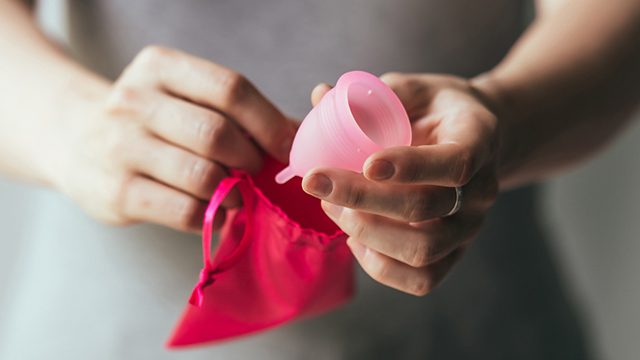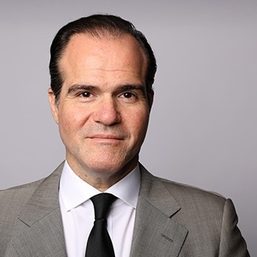SUMMARY
This is AI generated summarization, which may have errors. For context, always refer to the full article.
![[Dash of SAS] Making the menstrual period eco-friendly](https://www.rappler.com/tachyon/r3-assets/612F469A6EA84F6BAE882D2B94A4B421/img/A5855538AF03460AAE4F8324C6560727/ana-santos-150.png)
CALIFORNIA, United States – “The hu-what?!” The store attendant asked with brows knitted and raised.
“Where are the menstrual cups?” I repeated my question but already knew that it would not help my cause.
He’s a boy, I thought to myself. He doesn’t have a clue what you are talking about.
“It’s a feminine hygiene product,” I explained.
The kinks in his forehead cleared out with understanding.
“Oh. They’re in that aisle. You can ask her,” he said, handing me over to a female colleague with evident relief.
Okay, I have to confess that I only got around to even wondering about the menstrual cup because a friend of mind who read that I was in the US asked me if I had tried it.
I did not take this as a mere question. I took it as a challenge. How could I say I was doing my job as a sex and gender columnist if I did not know about menstrual cups?!
I decided menstrual cups would be my own mini-investigative project to research on. Which pretty much explains my trip to the organic food market that was met with a puzzled look.
Once I found my way to the personal hygiene aisle, I made another interesting discovery. (Is it just me or have I been making all sorts of realizations in the drug store or grocery lately? (READ: Birth Control Buffet)
Greening your period
Right next to the menstrual cups were organic and bio-gradable sanitary napkins and tampons. I knew I was on to something so I did the most sensible thing when I got home: I Googled “bio-degradable” and “menstruation” and a list of articles about greening your period came out.
Turns out that part of the movement to think about how our everyday choices impact the environment is an emerging trend for women to consider environmental – friendly ways of dealing with their period.
Articles that did the math showed that on the average, each woman will menstruate for about 35 – 40 years. During that time, she will use more than 16,000 pads and tampons.
Estimates show that each year 2.5 million tampons, 1.4 million pads and 700,000 pantyliners are used up then tossed into toilets and garbages before they find their way to landfills and incinerators. Pads and tampons that are flushed down the toilet wind up in sewage treatment plants and eventually flows into coastlines and oceans.
In the U.S. where tampons are a popularly used, it is estimated that by the time a single woman stops menstruating, she would have filled up one dump truck with the tampons that she has used over her entire menstrual life cycle. One dump truck filled with those tiny plastic applicators and toxic-laced cotton rods.
Plastic used in tampon applicators (which Stephen King called “pussy plugs” in Carrie), peel off strips on the pads and the plastic portions of the pad itself take years take years to decompose.

That brings us to the movement to reverse the (menstrual) flow and green our vagina with all sorts of alternatives to disposable sanitary napkins and tampons.
Apart from the organic, bio-degradable napkins and tampons I found next to the menstrual cups at the supermarket, fun and funky reusable cloth menstrual pads with cute designs are available on-line (my great grandmother would have gone to town with that one!) and even an innovation on good-old panties.
THINX panties double as feminine pads and promise to keep you dry with its patented anti-microbial and leak resistant fibers. Its inventor, a woman, has designed three lace-trimmed panties (one design is a thong) that won’t feel like you’re wearing a diaper or a pair of undies handed down by your grandmother – thank you!
Greening my red days is making more and more sense for women and for the environment.
Menstrual cups virgin
As for me, I unwrapped my purchases and studied this curious contraption that is a menstrual cup. It looks more like a bell than a cup, actually. I pulled out a bunch of YouTube video tutorials to help initiate me in using my first ever menstrual cup virgin hands.
I haven’t tried it yet — I’m still waiting for the time of the month and I must admit, I am filled with both excitement and trepidation.
I’ll let you know how it goes when I get my period and get to try this menstrual cup on for size. In the meantime, I think it is appropriate to end this article not with a period but with ellipses… – Rappler.com
Ana P. Santos is a former banker turned public health journalist focusing on women’s issues and sexual health rights. It’s a mouthful and for the most part, she’s simply referred to as a “sex columnist.” She’s just happy she can tell her mother that she made a career in the sex industry without engaging in commercial porn. She blogs at www.sexandsensibilities.com and Tweets @iamAnaSantos.
Menstrual cup image from Shutterstock.
Add a comment
How does this make you feel?


![[WATCH] Try This: Empanada Salteña from Argentina](https://www.rappler.com/tachyon/2023/04/try-this-empanada-saltena-argentina.jpg?resize=257%2C257&crop=765px%2C0px%2C1037px%2C1037px)


There are no comments yet. Add your comment to start the conversation.